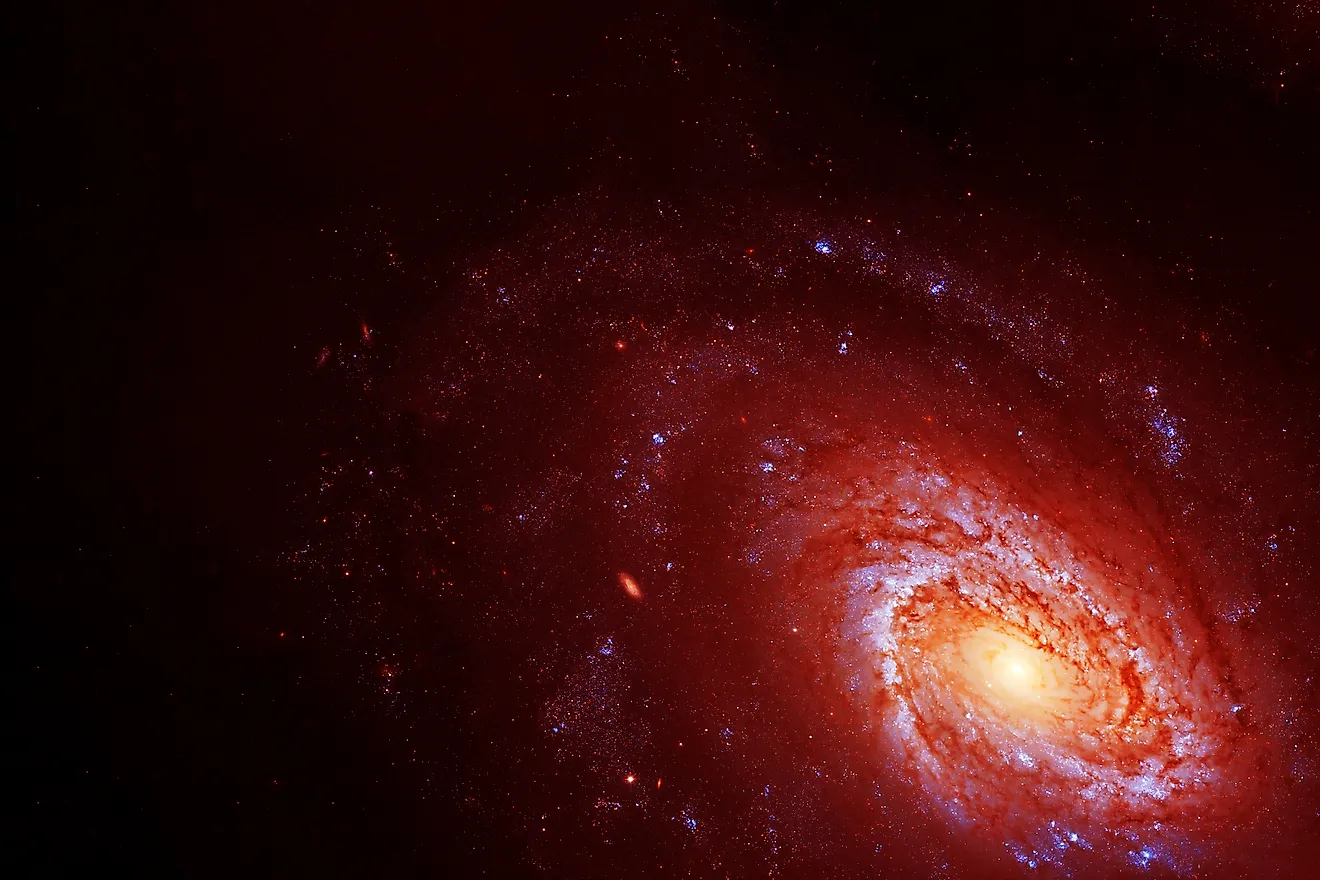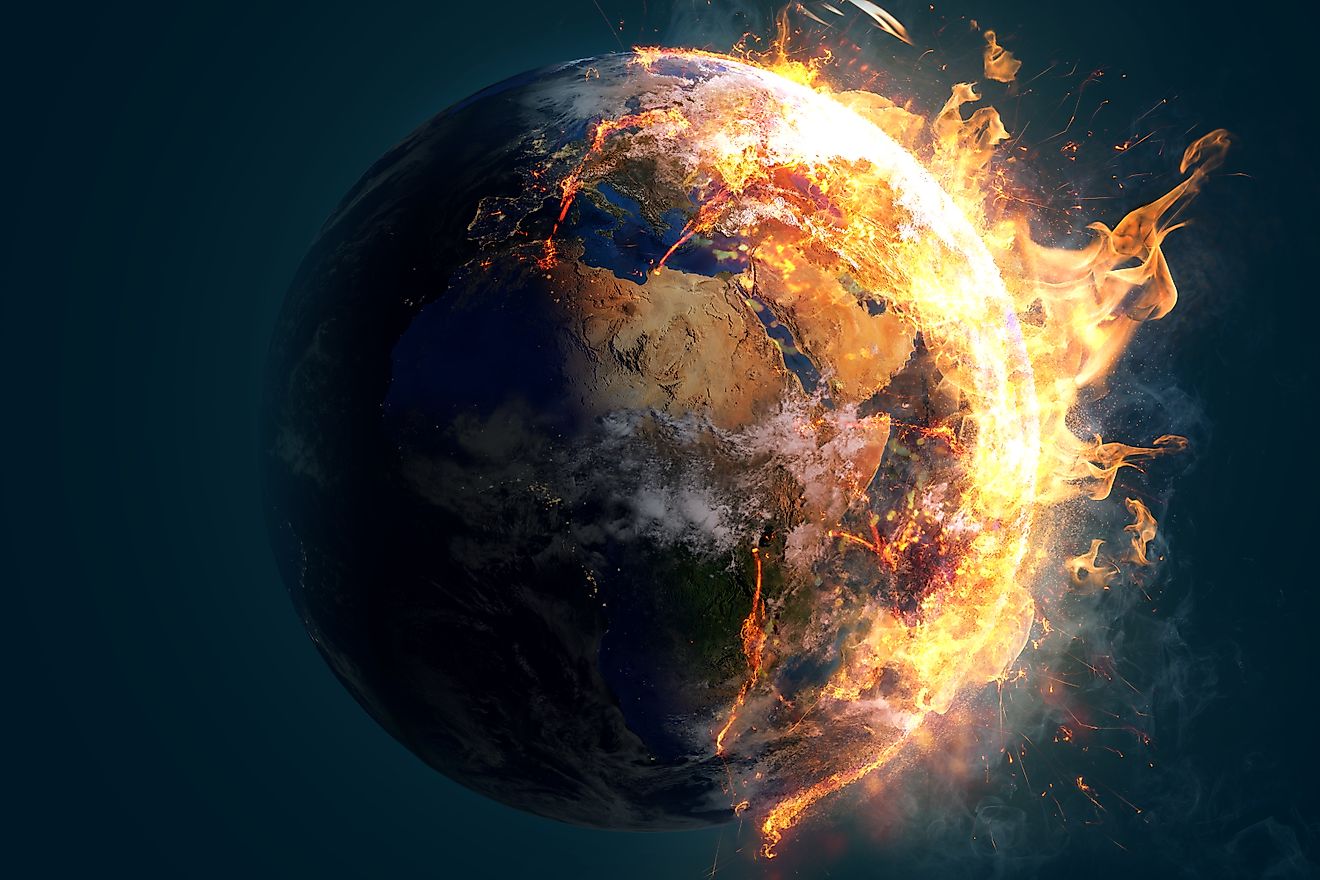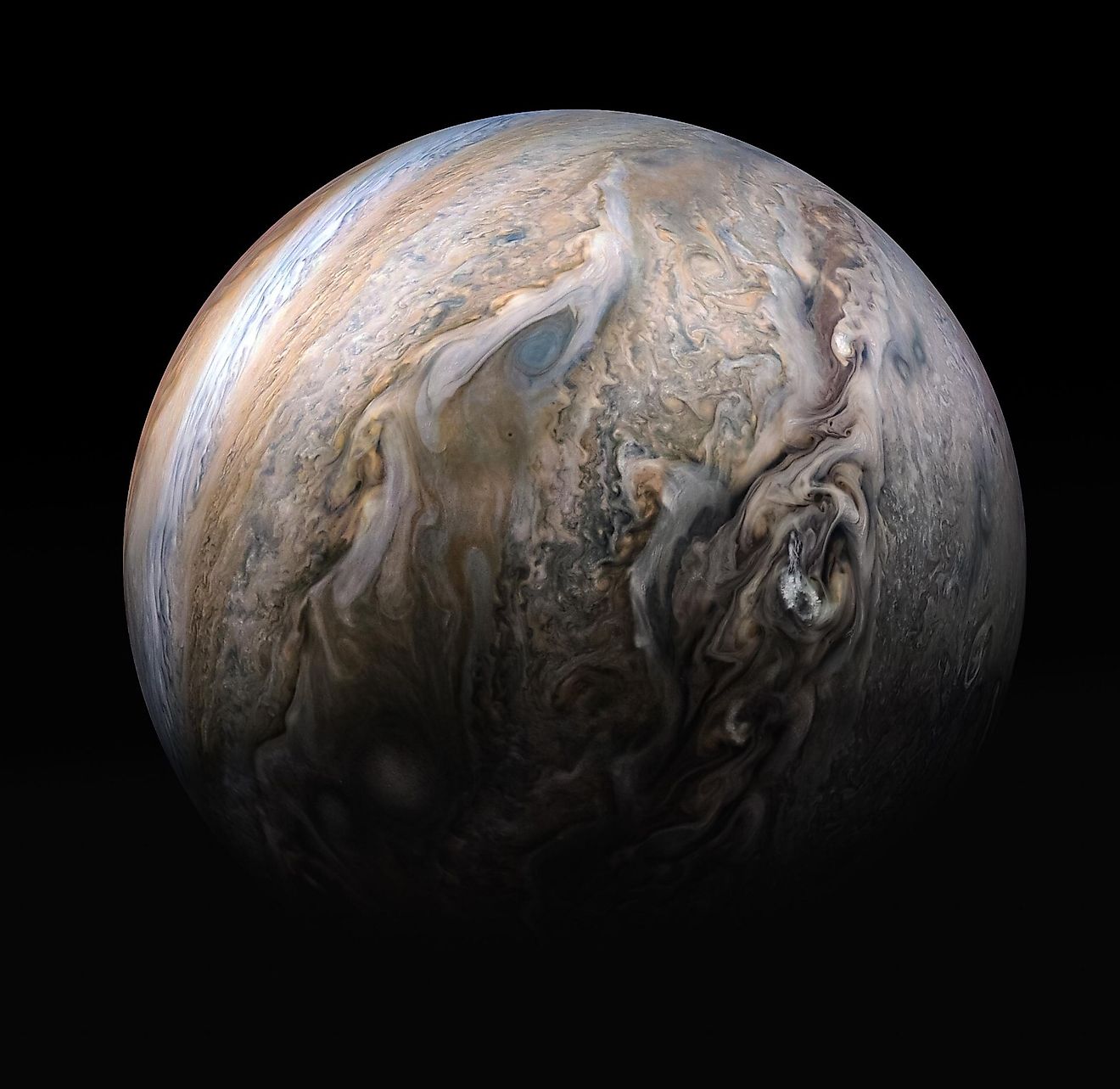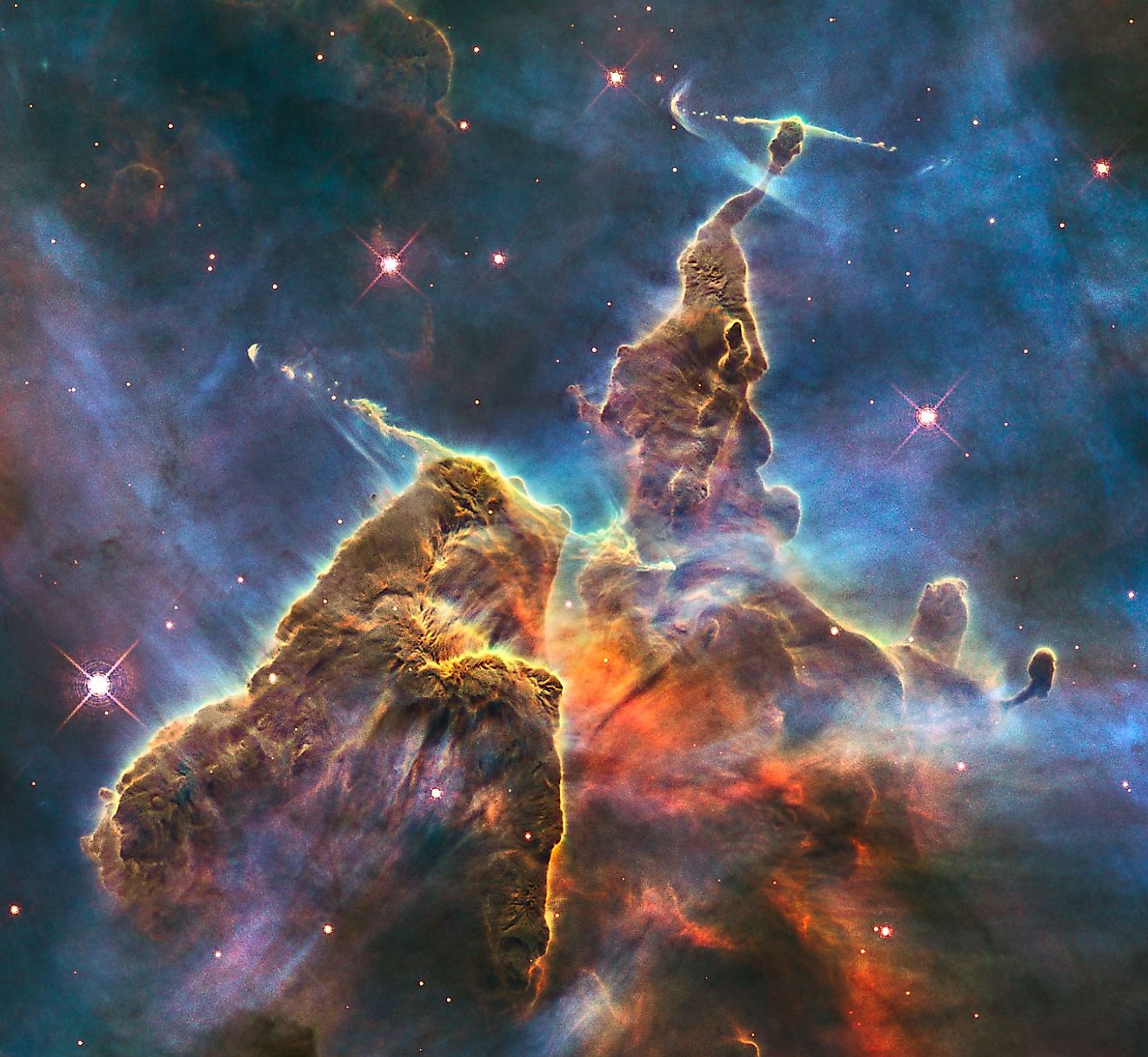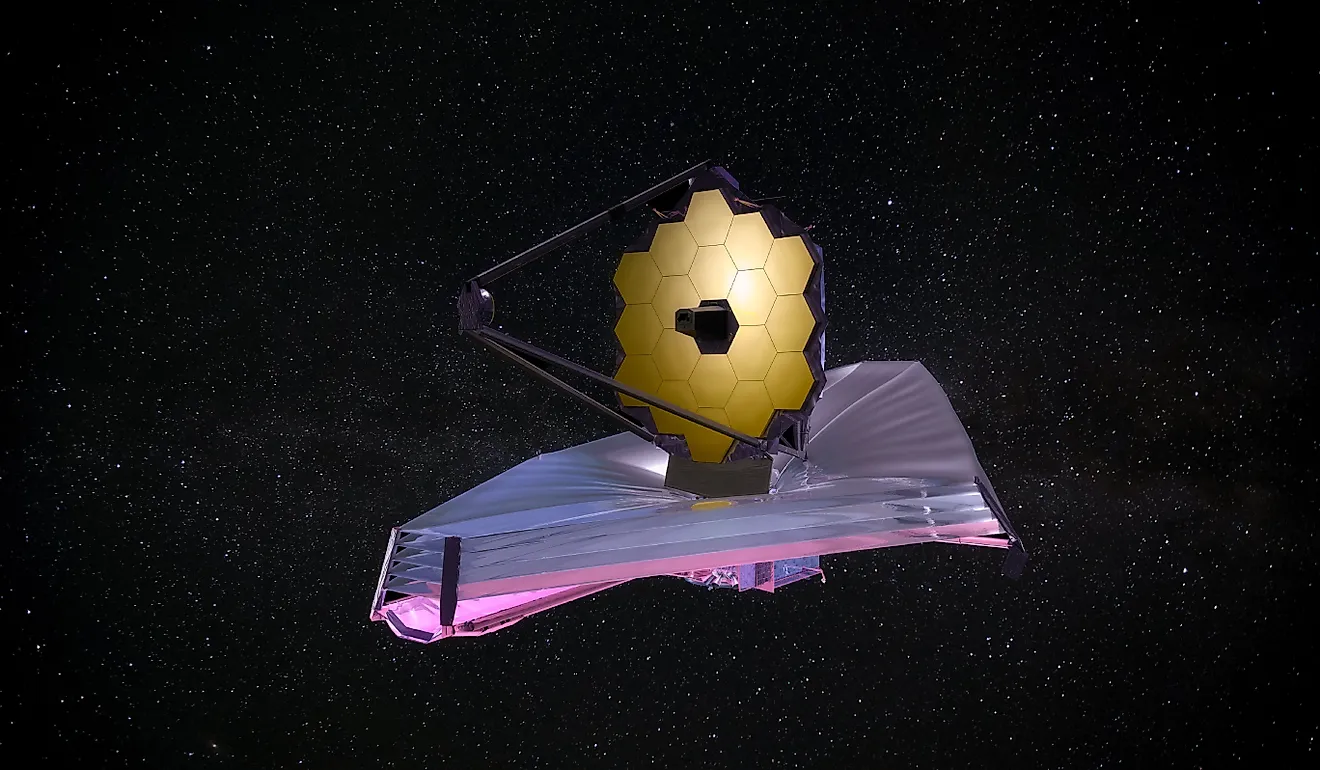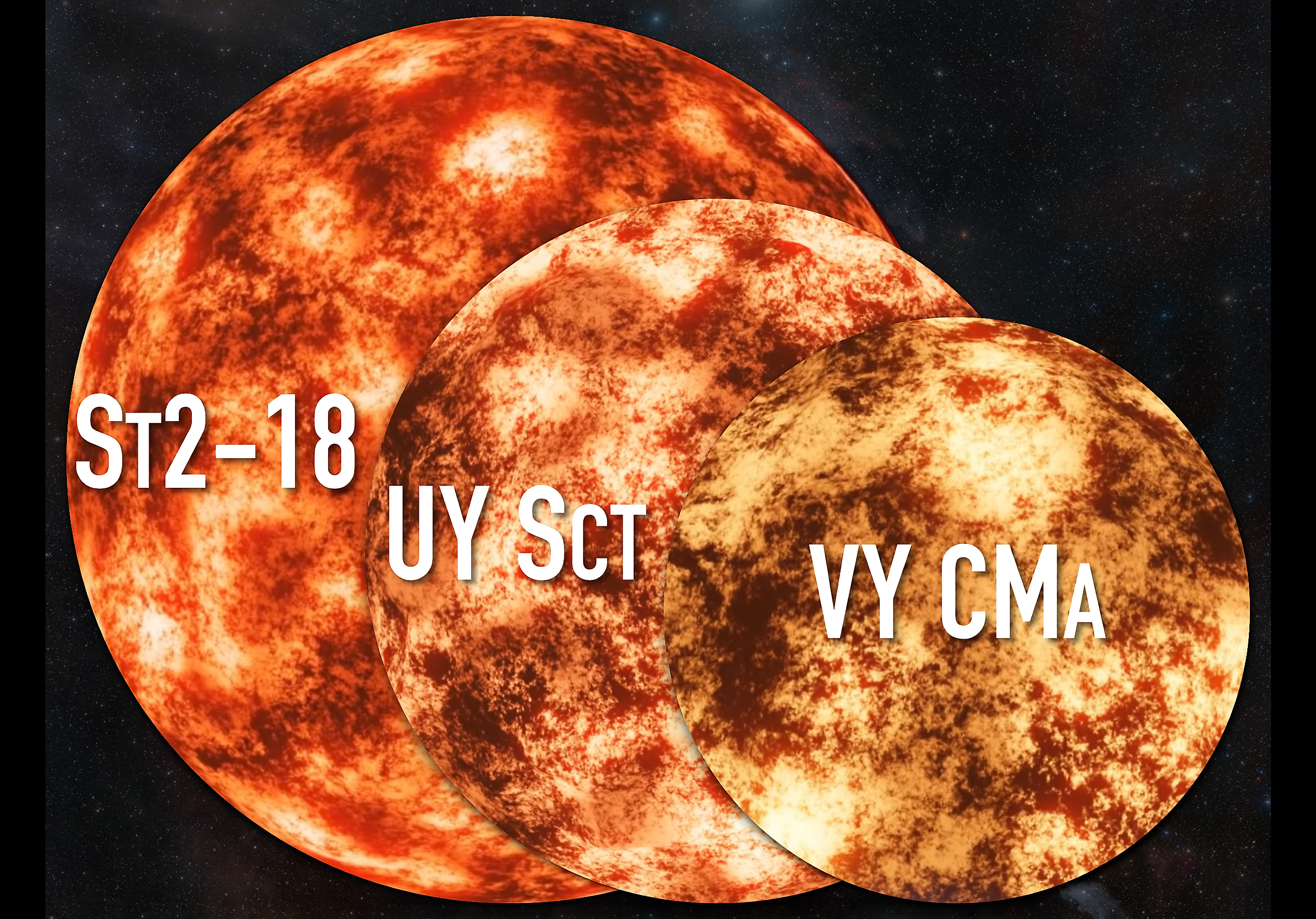
Stars
Stars are massive, luminous spheres of gas, mainly composed of hydrogen, with smaller amounts of helium and other elements. The lifespan of a star varies widely, generally ranging from several million to several trillion years. According to NASA, astronomers estimate there could be as many as one septillion stars in the universe, which is a one with 24 zeros after it. Within our galaxy, the Milky Way, there are around 100 billion. However, despite the immense number of stars, humans can see only about 4,000 in the night sky with the naked eye.
The Birth of a Star
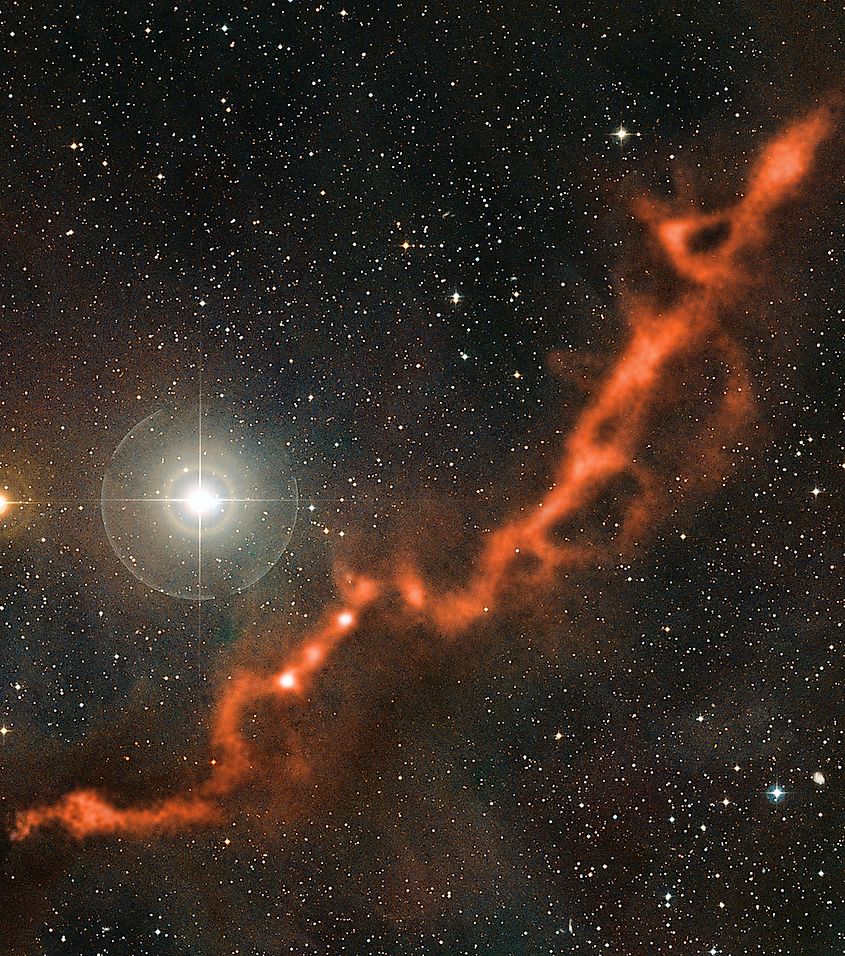
Stars form within gas clouds, known as molecular clouds. Molecular clouds are giant, spanning hundreds of light years in size and ranging from 1,000 to 10 million times the size of our Sun. Due to the cold temperatures in the molecular clouds, gas begins to clump together into dense pockets. The thick clumps within the gas clouds collide, growing in size and gravitational force. However, as gravity increases, the clumps begin collapsing, resulting in friction and extreme heat, which causes the birth of a baby star, also known as a protostar.
The Main Phase of a Star's Life
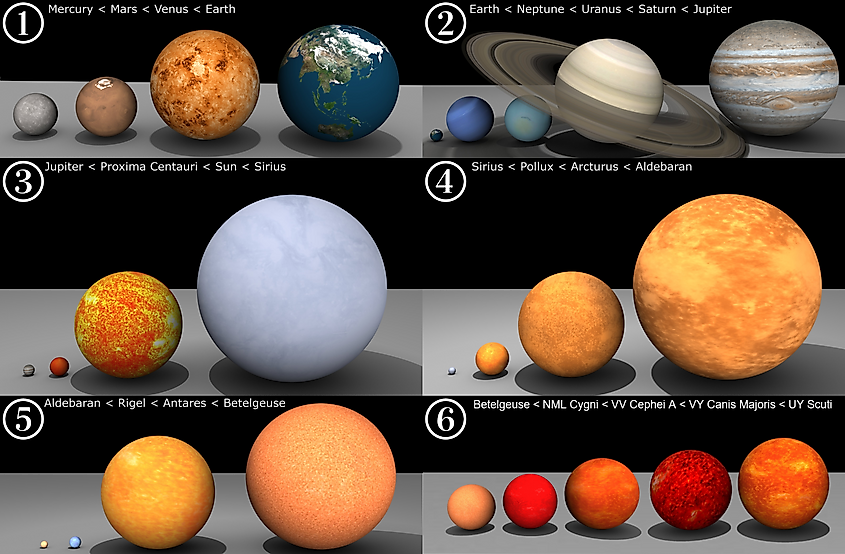
At the beginning of a star’s life, its energy is driven by the heat produced during its initial collapse. Millions of years later, intense pressures in the center of the star push hydrogen atom nuclei together, resulting in the formation of helium. This process, called nuclear fusion, produces an enormous amount of energy that counteracts gravity and prevents the star from collapsing. Nuclear fusion dominates most of a star’s lifespan. During this phase, astronomers refer to the star as a “main sequence star.” The star’s size, temperature, and luminosity slowly evolve when it is in its main sequence, a stage that can last millions or billions of years. Our Sun is currently in the middle of its main sequence phase.
A star’s size largely determines how long it lasts. A star with a larger mass burns more quickly and intensely than a smaller-mass star due to larger stars needing to burn more fuel to prevent its collapse. Small stars can sometimes burn for trillions of years, longer than the current lifespan of our universe. Contrarily, stars with huge masses will typically only burn for a few million years before beginning to burn out.
The Death of a Star
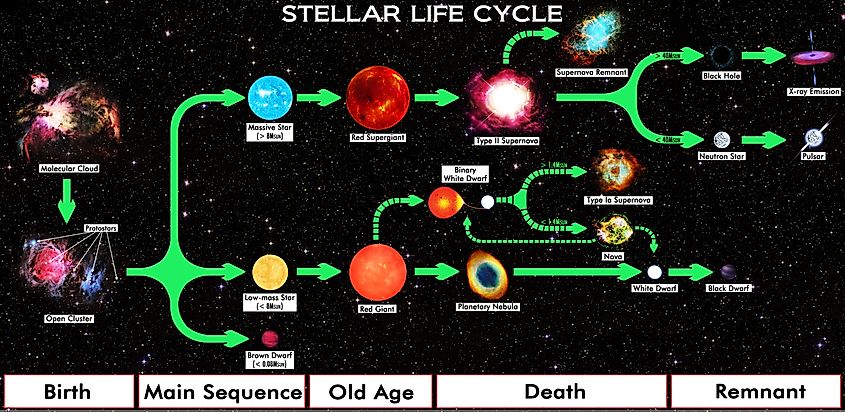
As a star approaches the end of its lifespan, it no longer has hydrogen to transform into helium in its core. Unable to complete the nuclear fusion process, the star begins to succumb to gravity, slowly collapsing. However, the pressure from the collapse generates additional energy, causing the star to swell up temporarily. The final stages that a dying star experiences depend on its mass.
Final Stages of a Low-Mass Star
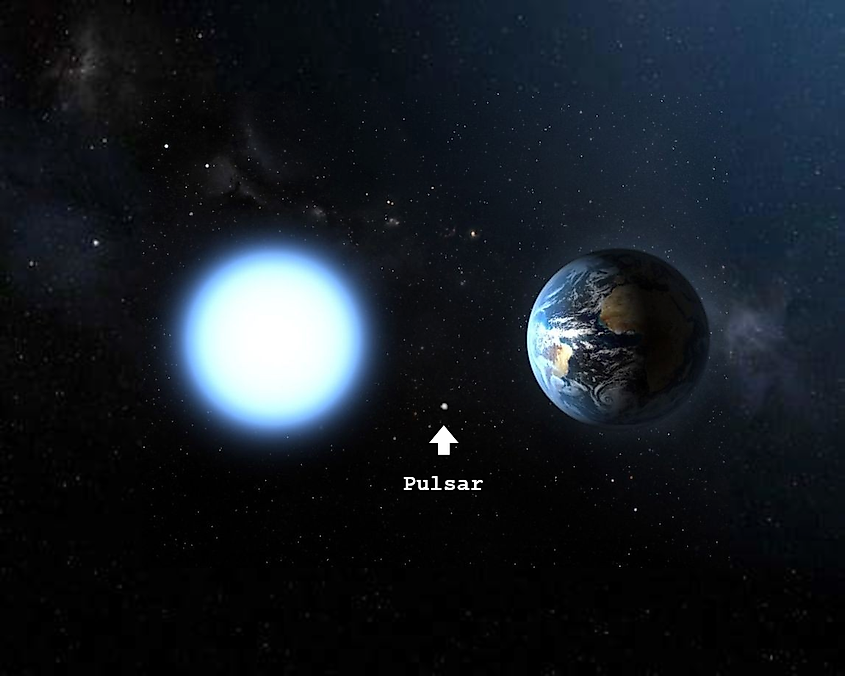
During the lifespan of a low-mass star, it will slowly expand, becoming a subgiant or giant star as it burns through all of its hydrogen during the nuclear fusion process. These newfound-giant stars often grow to be unstable, sometimes puffing up and expelling parts of their mass. Over time, the star will eject all of its outer layers, leaving a giant cloud of gas and dust, or planetary nebula. Having burnt all its fuel, only a small amount of energy remains at the star’s core, known as a white dwarf. The white dwarf that remains will begin to cool over the course of billions of years.
Final Stages of a High Mass Star
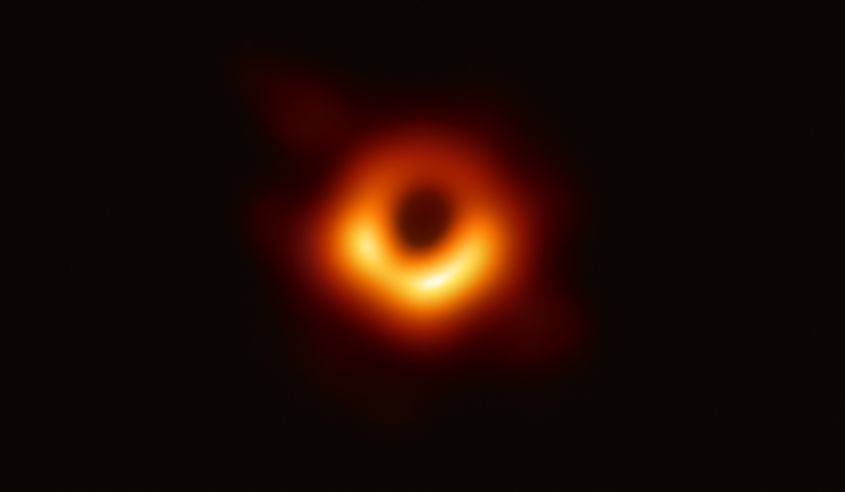
When a high-mass star runs out of hydrogen, it begins converting carbon into other elements such as oxygen, magnesium, and neon. These new elements become the star’s fuel, which prevents the star from collapsing for longer. This entire process generally lasts a few million years. However, once silicon in the star fuses into iron, it will abruptly run out of fuel within merely a few days. As a result, the core suddenly collapses before rebounding outwards from the force, causing a giant explosion known as a supernova. After this process, only the core remains, now extremely dense, living on as either a black hole or neutron star.
Nearest Stars
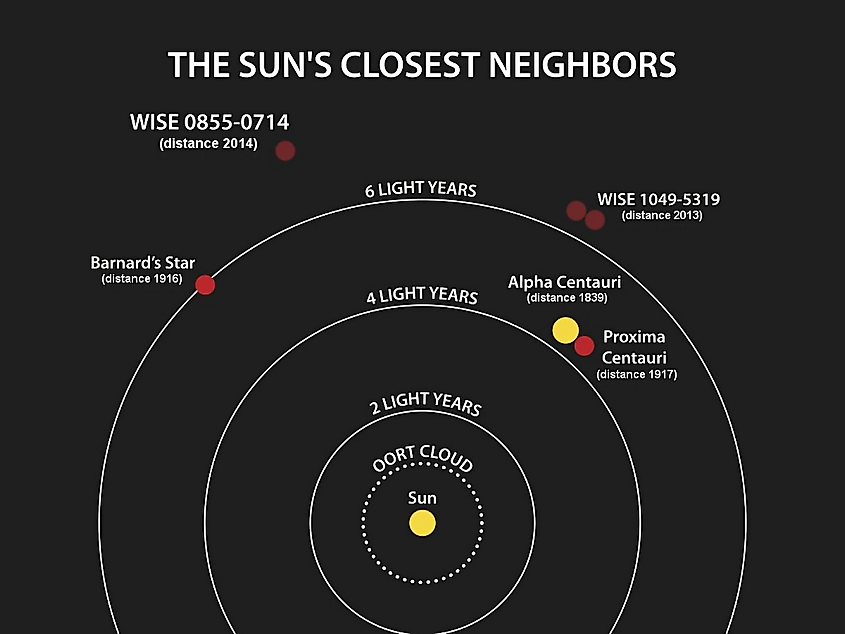
The Sun is the nearest star to Earth, at about 149 million kilometers (93 million miles). To put that into perspective, it would take around 19 years to travel that distance by plane. As a main sequence star or yellow dwarf, the surface temperature of the Sun is around 6,000 kelvins. After the Sun, Proxima Centauri is the nearest star, 4.2 light years away, and part of the Alpha Centauri star system. Proxima Centauri is a red dwarf star, roughly seven times smaller than our Sun and only about 50% larger than Jupiter. It has a surface temperature of around 3,100 kelvins, about half that of the Sun.
The next closest stars are Alpha Centauri A and B, both members of the Alpha Centauri star system as well. They are about 4.35 light-years from Earth and about as far from one another as the Sun is to Uranus. Alpha Centauri A, also known as Rigil Kentaurus, is about 10% more massive than our Sun and has a surface temperature of around 5,800 kelvins. In contrast, Alpha Centauri B is slightly smaller, with 10% less mass than the Sun and an orange-tinted glow.
Types of Stars
Main Sequence Stars
Main sequence stars make up about 90% of the universe's stars and are those currently undergoing nuclear fusion, converting hydrogen into helium. This process provides the energy that fuels the star and prevents it from collapsing under the force of gravity. Main sequence stars vary widely in color, luminosity, and size, with masses ranging from a tenth to 100 times that of the Sun. Their lifespans range from millions to billions of years.
Red Giants
When a smaller-mass star runs out of hydrogen, its core begins to contract, succumbing to the force of gravity. The increased heat from the collapse allows helium to fuse into carbon, causing the outer layers to dramatically expand. As a result, the star turns into a red giant, although the glow is typically more orange than red. Unstable, it periodically pulsates and inflates to shed parts of its atmosphere. A few red giants, such as Arcturus and Gamma Crucis, are visible in the night sky.
White Dwarfs
Once a red giant has ejected the entirety of its atmosphere, only a dim ball of energy remains at its core, known as a white dwarf. A white dwarf is typically about the size of Earth but with hundreds of thousands of times more mass. Once a star is in the white dwarf stage, it only cools and no longer produces new heat. White dwarfs can range in color from blueish-white tones to red.
Neutron Stars
A neutron star occurs when a high-mass star runs out of fuel and collapses before rebounding and causing a massive explosion or supernova. The dense remnants of the star’s core after the supernova are known as neutron stars. Neutron stars are too dim to see by eye in the night sky, but the Hubble Telescope has captured a few images.
Red Dwarf
A red dwarf is the smallest type of main sequence star, with a much smaller size and mass than the Sun. They are cool and emit orange light. The helium that a red dwarf produces rises to the surface of the star before it sinks back down to the core with more hydrogen. Because of this energy cycling, astronomers believe that some low-mass dwarfs can last up to 14 trillion years. Around 75% of the stars in the Milky Way are believed to be red dwarfs.
The Largest Star in the Universe
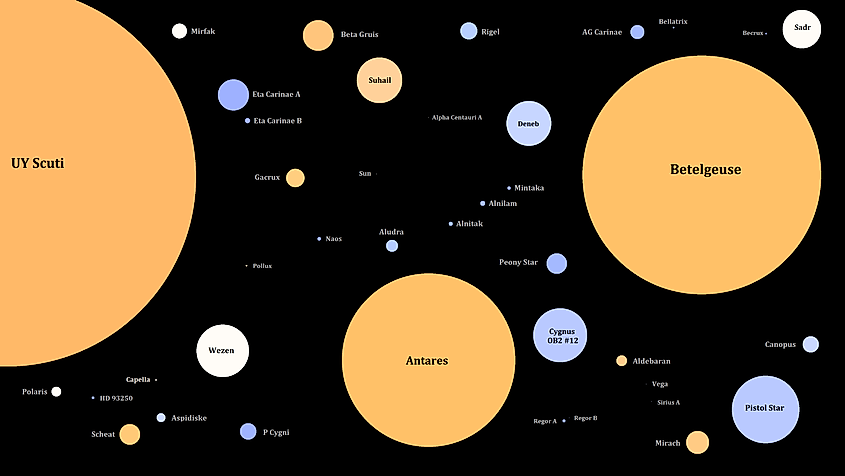
Stephenson 2-18 is the largest star that astronomers have recorded in the universe. With a radius of nearly 1.5 billion kilometers (930 million miles), it is 2,150 times wider than the Sun. It is located in the constellation Scutum, about 20,000 light-years away from planet Earth. For its size, Stephenson 2-18 is a relatively young star, with a lifespan of only a few million years. By comparison, our Sun is around 4.6 billion years old. However, due to its massive size, Stephenson 2-18 is burning through its energy extremely quickly and is likely to explode as a supernova within the next few million years.


